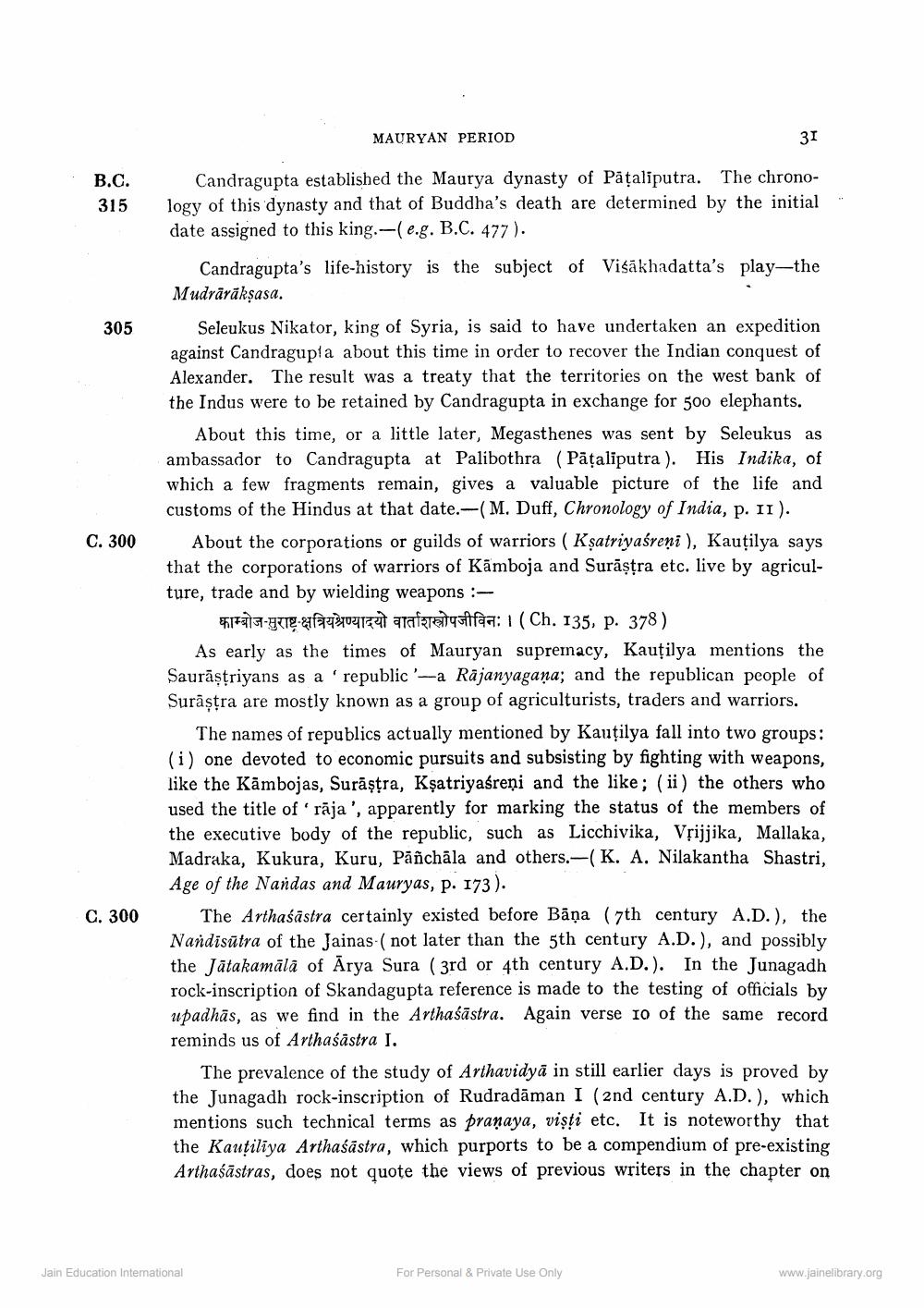________________
MAURYAN PERIOD
31
B.C. 315
305
C. 300
Candragupta established the Maurya dynasty of Pāțaliputra. The chronology of this dynasty and that of Buddha's death are determined by the initial date assigned to this king.-(e.g. B.C. 477).
Candragupta's life-history is the subject of Višākhadatta's play-the Mudrārākşasa.
Seleukus Nikator, king of Syria, is said to have undertaken an expedition against Candragupta about this time in order to recover the Indian conquest of Alexander. The result was a treaty that the territories on the west bank of the Indus were to be retained by Candragupta in exchange for 500 elephants.
About this time, or a little later, Megasthenes was sent by Seleukus as ambassador to Candragupta at Palibothra (Pāțaliputra). His Indika, of which a few fragments remain, gives a valuable picture of the life and customs of the Hindus at that date.-(M. Duff, Chronology of India, p. II).
About the corporations or guilds of warriors (Ksatriyaśreni), Kautilya says that the corporations of warriors of Kamboja and Surāsțra etc. live by agriculture, trade and by wielding weapons :
41795-HTTE 477 Vaiza atafretusifaa: 1 (Ch. 135, p. 378) As early as the times of Mauryan supremacy, Kautilya mentions the Saurāștriyans as a 'republic'-a Rajanyagaña; and the republican people of Surāṣtra are mostly known as a group of agriculturists, traders and warriors.
The names of republics actually mentioned by Kautilya fall into two groups: (i) one devoted to economic pursuits and subsisting by fighting with weapons, like the Kāmbojas, Surāştra, Kșatriyaśreņi and the like; (ii) the others who used the title of rāja', apparently for marking the status of the members of the executive body of the republic, such as Licchivika, Vrijjika, Mallaka, Madraka, Kukura, Kuru, Pāñchala and others.-(K. A. Nilakantha Shastri, Age of the Nandas and Mauryas, p. 173).
The Arthaśāstra certainly existed before Bāņa (7th century A.D.), the Nandisūtra of the Jainas (not later than the 5th century A.D.), and possibly the Jātakamālā of Arya Sura ( 3rd or 4th century A.D.). In the Junagadh rock-inscription of Skandagupta reference is made to the testing of officials by upadhās, as we find in the Arthaśāstra. Again verse 10 of the same record reminds us of Arthaśāstra I.
The prevalence of the study of Arthavidyā in still earlier days is proved by the Junagadh rock-inscription of Rudradāman I (2nd century A.D.), which mentions such technical terms as pranaya, vişti etc. It is noteworthy that the Kauțiliya Arthaśāstra, which purports to be a compendium of pre-existing Arthaśāstras, does not quote the views of previous writers in the chapter on
C. 300
Jain Education Interational
For Personal & Private Use Only
www.jainelibrary.org




